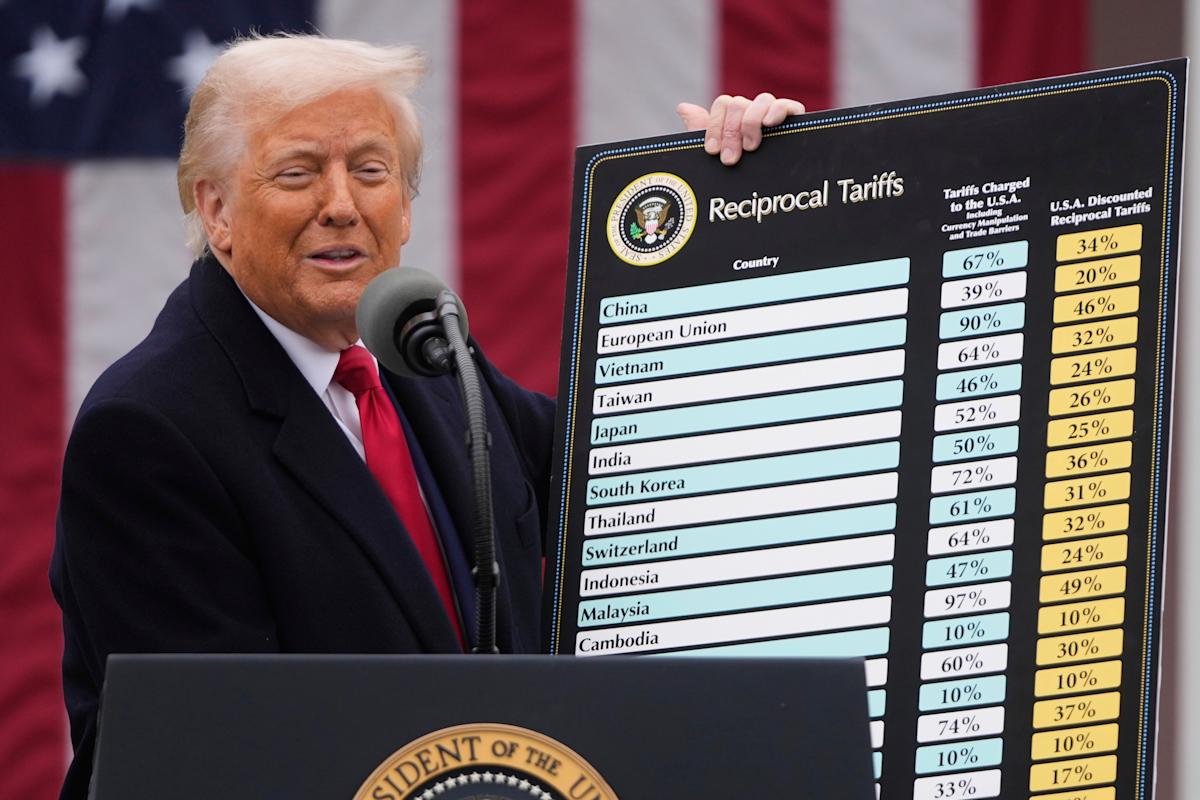## Walmart’s Warning: Is the Price Hike Train Coming to a Stop Near You?
The retail giant known for its rock-bottom prices just dropped a bombshell: some products may soon be getting more expensive.
Walmart CEO Doug McMillon cited the ongoing “uncertainty” surrounding tariffs as a key driver behind this potential price shift. But as Americans grapple with rising costs across the board, this news sends a chill down the spine.

Meanwhile, Walmart is seeing a surge in online sales, a trend further accelerated by the pandemic.
Is this a sign of things to come – a world where everyday staples become luxuries as tariffs and e-commerce redefine the retail landscape? We delve into Walmart’s latest warning and what it means for your wallet.Playing Offense: Walmart’s Investments and Value Proposition

Despite the looming threat of tariff-induced price increases, Walmart remains committed to its strategic investments aimed at bolstering its value proposition. While acknowledging the pressure on retail margins, CEO Doug McMillon emphasized the company’s dedication to providing customers with the lowest possible prices.
This “playing offense” approach underscores Walmart’s long-term vision, focusing on enhancing its e-commerce capabilities, expanding its private label offerings, and investing in technology to improve the customer experience. These strategic initiatives are crucial for navigating the evolving retail landscape and maintaining Walmart’s competitive edge.
Seeking Clarity: The Meeting with President Trump and Trade Negotiations
Dialogue with the White House
Walmart’s CEO, Doug McMillon, recently met with President Donald Trump to discuss the ongoing trade negotiations and their impact on imported goods. A Walmart spokesperson characterized the meeting as “productive,” highlighting the company’s desire to contribute its perspective to the ongoing dialogue.
Impact of the “De Minimis” Reduction
The meeting followed a significant development in the trade war: President Trump’s executive order reducing the “de minimis” tariff on cheap goods from China from 120 percent to 54 percent. While this move offers some relief, it remains to be seen whether it will be sufficient to fully mitigate the negative impact of tariffs on Walmart’s supply chain.
E-commerce Growth: A Bright Spot Amidst Tariff Headwinds
Despite the uncertainties surrounding tariffs, Walmart’s e-commerce business continues to demonstrate robust growth. The company reported a 22% increase in e-commerce sales, marking a significant milestone with its U.S. and global e-commerce operations achieving full-quarter profitability for the first time.
Factors Driving E-commerce Success
- Strategic Investments: Walmart has been aggressively investing in its e-commerce infrastructure, including expanding its fulfillment network and enhancing its website and mobile app.
- Omnichannel Approach: Walmart’s omnichannel strategy, which seamlessly integrates its online and offline channels, has been instrumental in driving e-commerce growth. Customers can browse online and pick up in-store, or order online and have items delivered to their homes.
- Competitive Pricing: Walmart’s commitment to low prices extends to its e-commerce platform, making it a compelling destination for price-conscious shoppers.
Navigating the Dynamic Retail Landscape
Shifting Consumer Spending: Winners and Losers in the General Merchandise Category
Walmart’s performance highlights the dynamic shifts in consumer spending patterns. While the company’s grocery and health segments continue to perform well, its general merchandise category, which typically carries higher margins, has experienced weakness.
This weakness is attributed to several factors, including:
- Consumer Confidence: Economic uncertainty and trade tensions have weighed on consumer confidence, leading to more cautious spending on discretionary items.
- Competition: Walmart faces intense competition from online retailers such as Amazon, which offer a wider selection and more convenient shopping experiences.
- Tariff Impact: Tariffs on imported goods have increased costs for retailers, putting pressure on prices and potentially impacting consumer demand.
The Global Supply Chain: Walmart’s Reliance on International Sources
Walmart’s extensive global supply chain makes it particularly vulnerable to disruptions caused by trade tensions. While the company emphasizes its commitment to sourcing products made, assembled, or grown in the U.S., a significant portion of its supply chain relies on international sources, with China and Mexico being key contributors.
The ongoing trade war with China has created uncertainty and volatility in Walmart’s supply chain, leading to increased costs and potentially impacting product availability.
Walmart’s Forecast: Growth Projections and the Impact of Trade Uncertainty
Despite the challenges posed by trade uncertainty, Walmart remains optimistic about its future growth prospects. The company expects net sales to grow between 3.5% and 4.5% in the second quarter and between 3% and 4% for the full year.
However, the company acknowledged that the “lack of clarity that exists in today’s dynamic operating environment makes the very near-term exceedingly difficult to forecast.” Walmart’s management team is closely monitoring the evolving trade landscape and adjusting its strategies accordingly.
Conclusion
Walmart’s acknowledgment of potential price increases amidst ongoing tariff uncertainty paints a stark picture of the economic headwinds facing American consumers. While the retail giant continues to experience robust growth in its e-commerce sector, the prospect of rising prices on essential goods threatens to exacerbate existing inflationary pressures and erode consumer purchasing power. The company’s reliance on global supply chains, vulnerable to the whims of trade disputes, underscores the interconnectedness of the global economy and the ripple effects that trade policy decisions can have on everyday life. For consumers, this news serves as a reminder that the cost of goods is not a static figure, but rather subject to the volatile forces of international trade. As Walmart navigates this complex landscape, its decisions will have far-reaching consequences for both its bottom line and the wallets of millions of Americans. The coming months will be crucial in determining how these tariff uncertainties play out and whether Walmart’s price increases materialize, further squeezing family budgets and potentially triggering a broader economic slowdown. Ultimately, the price of “uncertainty” may be the stability and affordability that consumers have come to expect.

